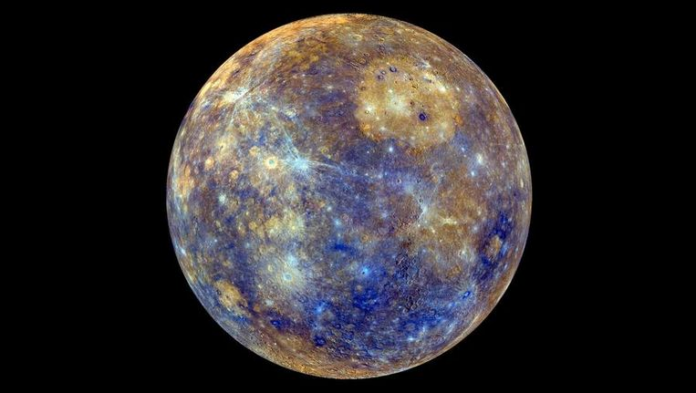
It is widely accepted that Mercury began shrinking more than 3 billion years ago. Intriguingly, recent findings suggest that this shrinking process is still ongoing, causing our solar system’s smallest planet to continually decrease in size.
For a long time, planetary scientists have understood that Mercury isn’t the same size it was billions of years ago. Although it’s the closest planet to the sun, its internal heat has gradually diminished over time as the heat dissipated. This has caused the planet to shrink. However, the pressing question remains: Is the planet still shrinking today and, if so, for how much longer? A recent study in Nature Geoscience has provided new insights into this matter.
Evidence from the MESSENGER spacecraft, which mapped the entire surface of Mercury, clearly shows that the planet shrank in the past. Images reveal striking, steep slopes, suggesting that the rocky planet contracted and its crust wrinkled. This was a result of the planet cooling, leading to a decrease in size and compression of the crust. The outcome was massive cliffs, some over a kilometer high and hundreds of kilometers wide, that continue to characterize Mercury’s landscape.

Launched in 2004 and arriving at Mercury in 2011, MESSENGER was initially set to study the planet for a year. Yet, it examined Mercury for four years. During this time, the spacecraft unveiled many secrets of the smallest planet in our solar system. It determined Mercury’s surface composition and confirmed the presence of water ice at its poles. By 2015, its mission was over, and it was instructed to crash into Mercury’s surface, creating a new crater.
It’s now known that Mercury started shrinking at least three billion years ago. Both scientific models and observations indicate the planet’s radius might have reduced by up to 7 kilometers. The rate of shrinkage has likely slowed down since.
Previously, there was no evidence of recent tectonic activity on Mercury. However, a research team has now presented compelling evidence from the MESSENGER data, showing the existence of small, fresh landforms called “graben”. These graben structures are found atop the planet’s larger compression-tectonic structures. Due to their relatively small and shallow nature, one wouldn’t expect them to last hundreds of millions or even a billion years, as they would typically disappear due to geological impacts over time.
Graben are tectonic structures in a planet’s crust formed by tectonic stresses and crustal stretching. They’re often associated with valleys or depressions between two parallel fault lines. When the crust pulls apart, a portion of it sinks, creating a long depression. Researchers suspect many of the newly discovered graben formed in the last hundred million years. The presence of numerous graben on top of larger tectonic structures indicates that recent tectonic activity has been widespread on Mercury. This strongly suggests the planet is still contracting.
Researcher Benjamin Man made an unexpected discovery of these small graben while conducting his doctoral research. After analyzing over 25,000 individual images, he identified hundreds of these structures. Their presence is significant because it indicates not only recent tectonic activity but also its occurrence across the planet’s entire surface. It confirms the ongoing global shrinkage of Mercury, raising questions about the planet’s inner chemical properties.
Despite these findings, there’s still much to learn about Mercury. David Rothery, project lead and member of the BepiColombo science team, mentioned that while many graben were discovered, other similar landforms remain unidentified due to the limited clarity of MESSENGER’s images.
However, this mystery might soon be solved. The BepiColombo probe is currently en route to Mercury, aiming to reveal the planet’s origin, its geological processes, and its structure. “Once the European and Japanese space mission BepiColombo starts capturing more detailed images of Mercury in early 2026, we’ll be able to scrutinize these potential graben closely,” said Rothery. “This will enhance our understanding of the extent and magnitude of Mercury’s recent tectonic activity. It might even confirm or refute the research team’s findings. This is the essence of science: using new data and observations to validate or modify existing theories.”










